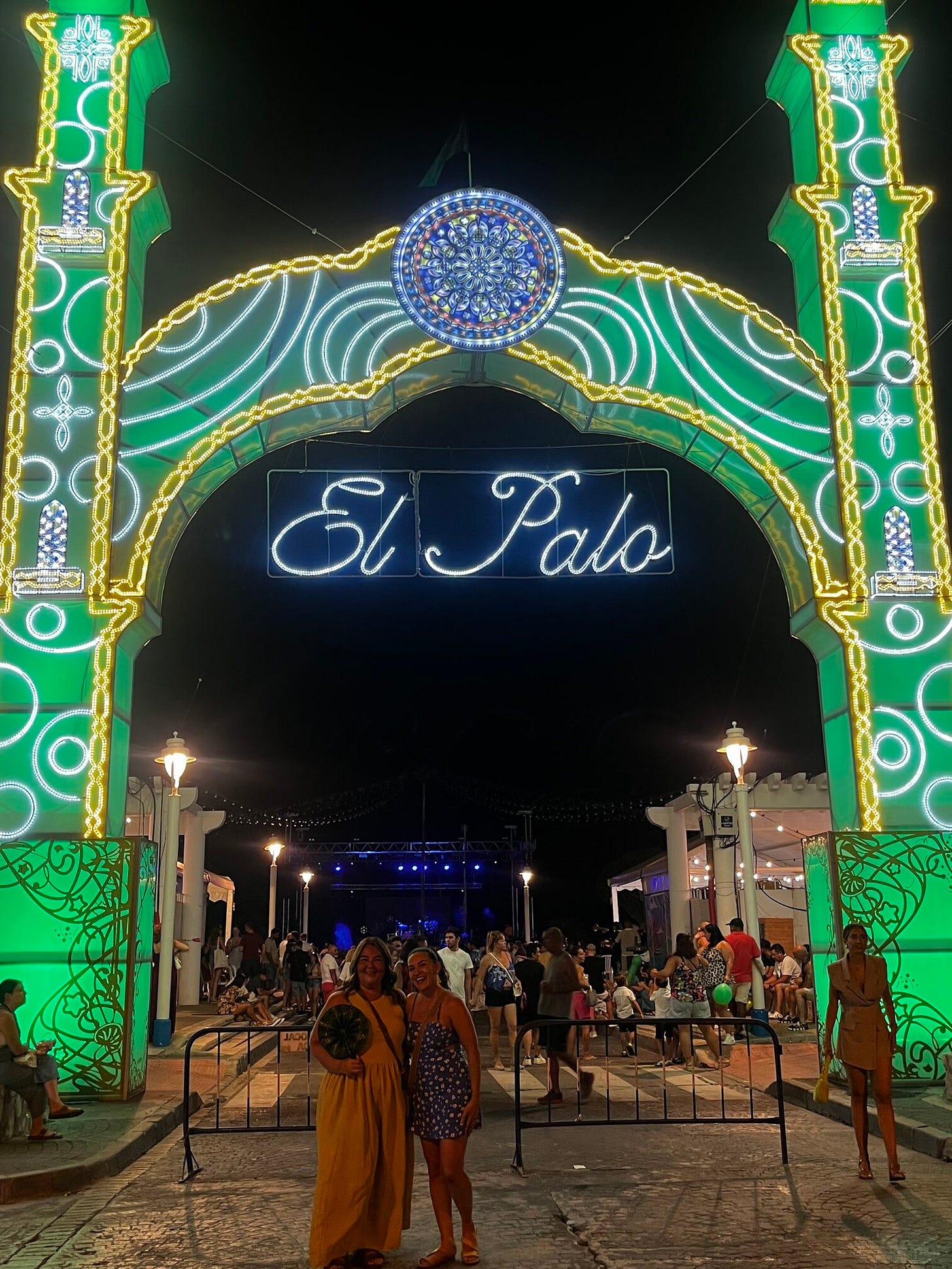A Saint, a Sea Procession, and Sardines: My Favorite Day in Málaga
How a small coastal neighborhood in Málaga celebrates its beloved patron saint, and why I love it.
I’m a sucker for the annual ferias of southern Spain. One of the most unique ones I’ve ever attended happens every summer here in Málaga: the celebration of the patron saint of sailors and fishermen in El Palo. It’s one of those events that reminds you just how far from home you really are—living in a place with deep tradition, history, heart, and a whole lot of grilled sardines!
Every July 16, El Palo (an authentic old fishing neighborhood of Málaga, just a 30-minute walk from my place) honors Our Lady of Mount Carmel—or la Virgen del Carmen as she’s known here—with a four-day festival. She’s the protector of everyone who works at sea. Her origin dates back to the 12th century, and while no one knows exactly when El Palo’s first celebration began, the modern version may have started as recently as the 1990s.
While religious in origin, this isn’t a somber occasion. Think full-blown processions, flamenco dresses, music in the streets, and a boat parade that’s the centerpiece of it all. Local fishermen, dressed in traditional marengo (seaman) attire—white shirts, black trousers, red cummerbunds—carry a halo-adorned statue of the Virgin through the streets, lifting her on their shoulders like a queen.
From the church, they make their way to the beach, where she’s placed on a traditional jábega, one of Málaga’s historic fishing boats, and rowed out into the Mediterranean. She’s surrounded by other boats blasting their horns in celebration. Some in the procession carry oars as they walk alongside her, almost like guardians as she’s paraded from land to water to bless the sea. It’s beautiful, moving, a little chaotic, and totally cinematic.
This year, I heard the horns of the procession from home. I’m lucky to have sea views from my balcony, and when Carmen takes to the streets, you can hear the fishing villages below come alive: the cheers, church bells, brass instruments, and drums. I caught a glimpse of the swarm of boats in the distance but (ugh!) I missed the main maritime procession. I got the dates wrong and life got in the way. My calendar is already marked for next year!
Even though I missed seeing her set out to sea, I made it to the daytime festivities—and that’s where the party really is! Picture this: families spilling into the streets, a small amusement park along the beach, vendors selling local snacks and toys, and folks decked out in full feria garb. I’m talking ruffled flamenco dresses, men in sombreros cordobeses (wide-brimmed hats), horses trotting by, and of course, live music and Sevillanas dancing in the streets.
Sevillanas is a folk dance from Seville. It’s a cousin of flamenco, more festive and choreographed, danced in pairs. You’ll see it at ferias all over southern Spain. And everyone—from little kids to abuelos—knows the pasos, or steps.
It’s hard not to fall in love with El Palo during this fiesta. It’s festive, familiar, and deeply local. It isn’t polished for tourists; it’s a true community celebration that’s been happening for generations. I love seeing the pride in being paleño (someone from El Palo), and how this festival remains such a neighborhood affair. It’s the kind of event where you run into your baker dancing next to your landlord’s cousin.
And let’s not forget the food! Sardines grilled on open fires—espetos—right on the beach. According to local tradition, they’re at their tastiest de Virgen a Virgen, meaning from the feast of the Virgen del Carmen (July 16) to the Virgen de la Victoria (September 8).
Even after nearly a decade in Spain, traditions like this—right in my backyard—still feel magical. They make me appreciate Málaga even more. People here deeply value community, family, and where they come from.
Who’s making plans to join me next year?
— Cepee Tabibian, IL Spain Correspondent
Editor’s Note: Want to hear more from Cepee? Read her full story about how she transformed her life after moving to Spain—trading routine for adventure and building a new life she loves.
Read here: How Living in Spain Changed My Life in Unimaginable Ways



